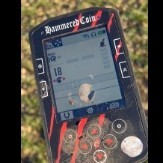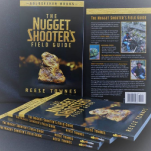Leaderboard
Popular Content
Showing content with the highest reputation on 08/30/2018 in all areas
-
19 points
-
This gold prospecting and metal detecting story takes us all the way back to the beginning - my beginning that is. I was fortunate enough to be born in the Territory of Alaska in 1957. Alaska was still very much on the frontier back in those days. My father was a farm boy from the midwest who headed for Alaska in the early 50's with not much more than an old pickup truck. He worked as a longshoreman offloading ships in Seward, Alaska for a time. He decided to get some education, and earned his way through college in Fairbanks, Alaska, by driving steampipe for the fleet of gold dredges that were still working there. He spent some time in Seldovia, Alaska, working the "slime line" in a fish cannery. He met my mom in Seldovia, the two got married, and finally settled in Anchorage, Alaska. I came along in 1957. My father had taken a job as a surveyor but money was tight in the early years. I was raised on wild game and garden grown vegetables, and as soon as I was old enough to handle it, I was walking a trapline every winter with my father. Dad was a hard worker, and Alaska was having one of its many booms at the time - the construction of the oil and gas fields in Lower Cook Inlet. This was the Swanson River oilfield, discovered the year I was born. The state was prospering, and my father along with it as a surveyor on the new Swanson Field. He got the bug for flying early on, and by the time I became a teenager he finally got his dream plane at the time - a Piper Super Cub, the classic Alaska Bush airplane. Super Cubs equipped with oversize "tundra tires" can land just about anywhere you can find about 300 - 400 feet of open ground. A great little airplane and the one I ended up flying to get my own pilot's license. Super Cub N1769P parked on knoll in Talkeetna Mountains, Alaska It was in this same timeframe that dad got me hooked on gold prospecting. In 1972 I saw an ad in a magazine "Find Lost Treasure" and had acquired my first metal detector, a White's Coinmaster 4. This must have got discussions going about gold, and my father did have some knowledge on the subject having worked around the gold mines in Fairbanks. He took me to a little creek south of Anchorage, Bertha Creek, and I found my very first flakes of gold! By the ripe old age of 14 gold fever was in the air, I had my first metal detector, and already wanted a gold dredge. My first dredge, a 3" Keene with no floatation, was on the way to me in 1973. Keep in mind that the price of gold had only recently been deregulated from the old fixed price of $35 per ounce. In 1972 it was around $60 per ounce, and in 1973 made it to just over $100 per ounce. The money was not my motivation at all. I already just loved finding gold, and the connection to the prospectors of old and the historical quest for gold were more compelling than any dream of striking it rich. I just wanted to find gold! My first metal detector and first gold dredge (my 3502 had the older aluminum header box & a power jet) A young man with a new detector, new gold dredge, gold fever, and a father willing to fly him anywhere in Alaska on adventure. How great is that? Now there was only one problem - where to go? There was no internet then, so it boiled down to libraries and research. In short order I discovered the United States Geological Survey (U.S.G.S.) bulletin series and the number one Alaska title of the series, Placer Deposits of Alaska, U.S.G.S. Bulletin 1374 by Edward H. Cobb. This one book and the references contained in it became my prospecting guide to Alaska. My desired target? Remote locations with large gold nuggets! I read the book and certain places just jumped out at me. One was the Iditarod area and places like Ganes Creek and Moore Creek - tales told elsewhere. This paragraph of page 114 caught my eye: "Placer mining in the Chisana district, first of creek gravels and later of bench and old channel deposits of Bonanza and Little Eldorado Creeks, has always been on a small scale with simple equipment. The remoteness of the area, shortages of water on some streams, and the small extent of the deposits all prevented the development of large operations. There has been little activity since World War II; the last reported mining was a two-man nonfloat operation in 1965." Wow, that alone sounds pretty good. Nothing really about the gold however. The secret to the Placer Deposits series is not so much the books themselves, though they are great for getting ideas, like I did. The key is to use the references listed and in this case the main one is The Chisana-White River District, Alaska, U.S.G.S. Bulletin 630 (1916) by Stephen Reid Capps. It turns out I had stumbled over the location of the last actual gold rush in Alaska in 1913. It was a small rush and did not last long, but it did mark the end of an era. The world was on the brink of war and the age of gold rushes was soon to be history. The history of the area is covered in the report starting on page 89. It is fascinating reading, but it was this note on page 105 that really sealed the deal: "The gold is bright, coarse, and smoothly worn. The largest nugget found has a value of over $130, and pieces weighing a quarter of an ounce or over make up about 5 per cent of the total gold recovered. The gold is said to assay $16.67 an ounce." Gold nuggets a quarter ounce or larger make up five percent of the gold? And that $130 nugget at $16.67 an ounce? Somewhere over seven ounces. That's all I needed to know. Very remote, worked by simple means, and large gold - I wanted to go to Chisana in general and Bonanza Creek in particular. Even the creek names scream gold - Bonanza Creek, Big Eldorado Creek, Little Eldorado Creek, Coarse Money Creek, and Gold Run. Now all we had to do was get there. But when I said remote, I meant remote. Chisana is practically in Canada 250 air miles from Anchorage. To be continued..... Chisana, Alaska location map7 points
-
4 points
-
3 points
-
3 points
-
Well done mate. You should have learned by now that having the most expensive machine is not necessarily the 'be all to end all'. Being in the right place is. Your 4500 and 18" elite is a great combo, and so close in performance to a Z that the difference is negligible, plus you have a weight advantage and the ability to use a large range of coils. Just think of how much gold you will have to find to make up that extra expenditure, and as you have found, it is not getting any easier to find. Some of my best finds could have been got with a VLF. You have to be in the right place.3 points
-
Nice one Jin. 18" Elite my favourite coil atm. found my biggest piece (3 3/4oz) in recent times with it. The QED loves it as does the 5000.3 points
-
Hello, I know that this post is long dead but still want to report that there is Silver to be found in Anchorage. All these finds have come from July 1st 2018- August 29th 2018 using the Minelab Equinox 800 in Park 1 with no real tweaks except to sensitivity to quiet the Machine. Almost without exception everything has come from 2-3 hunted out parks and school yards. As previously reported nothing particularly old with silver coins from 1936-1951. With a handful of wheat pennies old nickels and other interesting finds. Clad roughly is $45.00. Good Luck, Justin3 points
-
Whats growing in the pot? Looks like parsley. I suppose the chicken wire is to keep the kangaroos and rabbits from eating it. Not sure why anyone would go to that much trouble growing stuff in the bush unless it was pot.3 points
-
Had a heck of a time getting there these last 2 weeks but finally made it today. Pretty big deal for me at my early stage of nugget shooting. Got 6 today and here's a pic of everything so far...should be 104(?). Over half ounce but well shy of 1 ozt. We'll keep pluggin away and hopefully I can get maybe 1 ozt by end of season???? Yellow rocks come from 4 different locations...2 in Idaho and 2 in Montana... STRONGLY thinking about a PI machine in near future....hmmmmm?????? BIG THANKS to ALL for the help, info, and Steve for maintaining such and great and informative website!!!!!2 points
-
Last month, Reg Wilson detected this pretty 50 gram colour in pipeclay at about 20" with his QED: Last fortnight, while we were detecting a remote area in the far west of Victoria with limited success, He also scored the Edward 7th medallion (above) The week before, while working together he scored a Chinese coin (no image) and this naval button. Any speculation as to nationality welcome: During the same time period, apart from some gold, I managed to score enough munitions to start a military campaign Now, despite many decades of detecting goldfields, I've never found a Chinese coin. How come some people find interesting stuff while detecting? Not holding my mouth right perhaps - - ?2 points
-
Couldn't believe my luck! In a park in Hinckley that's been around since 1879, I come across a 1941 Quarter. Pinged at 31. The back story i guess goes summit like this > ,During WW2 Captain America was canoodling with Mrs Mary J Rottencrotch and dropped it whilst ....... ?? Whooooo Hoooooooo!!! Andy. EDIT: Also note, it has no minting mark indicating its location of manufacture. Probably from Philly if i'm not mistaken (which incidentally happens alot)2 points
-
Can you believe I still remember when we had a hand crank phone and a party line in our house? Geez, I am getting old!! I literally saw Anchorage grow from a true frontier town cut off from the world (I watched the first live television satellite broadcast in 1969 - the moon landing) to what is today just another American city with all the big box stores. Not that different than Reno really except for the weather. Communications kind of ruined everything. You can be out in the middle of nowhere and there is a satellite dish and internet connection these days. It was that being off grid, totally on your own thing that got lost in the process. Dear old Dad is going strong at 87, though maybe a little slower. Yes, he is an amazing man in many ways. He let me do things I would be too scared to let a child of my own do but which instilled in me a great sense of confidence and self-reliance. My father ended up being a partner in the surveying firm he hired on with, and later founded his own surveying company. He worked from one end of the state to the other and his name is on records all over the state. He was one heck of a bush pilot and flew supply plane on many of the jobs. My good fortune again as I got to see a lot more of Alaska than most people ever will. My goal is to add a "chapter" to the tale each morning covering the time from the 1970's until the present. Chisana was a big part of my prospecting life but I have never told the story in full until now. So check back daily for new entries.2 points
-
Common, Paul, speak in F degrees, or, both.... You are going native quick. Have you bought some short-shorts yet? fred2 points
-
So that's what flew over my place! It sent the dogs mad. By the time I rushed out it was disappearing over the trees. I just caught a glimpse of the red ML logo on the tale of the chopper.2 points
-
2 points
-
2 points
-
The Minelab Equinox 800 was announced in 2017 and has really made an impression in the detecting world. Never before have so many features been packed into a lightweight metal detector at such a low cost. Key items include waterproof to 3 meters (about ten feet), genuine multifrequency operation, extremely fast recovery speed, built in wireless headphone capability, and the ability to run one of several different frequencies separately from the multifrequency mode. All this and more at the stunningly low announced price of $899.00. Visit the new Minelab Equinox Forum! 9/5/18 - New Equinox Software Version Download Announcement This website tends to focus on metal detectors that have some sort of included gold prospecting capability. The Equinox 800 is of interest due to a dedicated prospecting (Gold) mode and it's ability to run at either 20 kHz or 40 kHz. The 40 kHz frequency in particular is clearly in the realm normally only available in detectors made specifically for gold prospecting. Minelab has actually released two Equinox models, the Equinox 800 (US$899) and the lower price (US$649) Equinox 600. Both have identical performance in the modes they share, but the Equinox 800 offers one extra mode (the Gold Mode) plus other advanced audio tuning features. Minelab Equinox Series Metal Detectors Minelab Equinox 600 basic features: 3 Detect Modes (Park, Field, Beach) 4 Frequency Options (5kHz, 10kHz, 15kHz, Multi) Wired Headphones Supplied Minelab Equinox 800 basic features: 4 Detect Modes (Park, Field, Beach, Gold) 6 Frequency Options (5kHz, 10kHz, 15kHz, 20kHz, 40kHz, Multi) Bluetooth Headphones and WM 08 Wireless Module Supplied As can be seen the main difference is the Equinox 800 adds the ability to employ the 20 kHz and 40 kHz frequency settings separately that could enhance the ability of the detector to find very small items. These could be small jewelry items or small/thin silver hammered, cut coins, gold nuggets, or micro jewelry. ads by Amazon... Introducing Minelab Multi-IQ Multi-IQ is Minelab’s next major innovation and can be considered as combining the performance advantages of both FBS and VFLEX in a new fusion of technologies. It isn’t just a rework of single frequency VLF, nor is it merely another name for an iteration of BBS/FBS. By developing a new technology, as well as a new detector ‘from scratch’, we will be providing both multi-frequency and selectable single frequencies in a lightweight platform, at a low cost, with a significantly faster recovery speed that is comparable to or better than competing products. Minelab Multi-IQ Simultaneous Multi-Frequency Range Multi-IQ achieves a high level of target ID accuracy at depth much better than any single frequency detector can achieve, including switchable single frequency detectors that claim to be multi-frequency. When Minelab use the term “multi-frequency” we mean “simultaneous” – i.e. more than one frequency is transmitted, received AND processed concurrently. This enables maximum target sensitivity across all target types and sizes, while minimizing ground noise (especially in saltwater). There are presently only a handful of detectors from Minelab and other manufacturers that can be classed as true multi-frequency, all of which have their own advantages and disadvantages. How does Multi-IQ compare to BBS/FBS? Multi-IQ uses a different group of fundamental frequencies than BBS/FBS to generate a wide-band multi-frequency transmission signal that is more sensitive to high frequency targets and slightly less sensitive to low frequency targets. Multi-IQ uses the latest high-speed processors and advanced digital filtering techniques for a much faster recovery speed than BBS/FBS technologies. Multi-IQ copes with saltwater and beach conditions almost as well as BBS/FBS, however BBS/FBS still have an advantage for finding high conductive silver coins in all conditions. Minelab Equinox 800 Controls Explained Note from Steve Herschbach - I have never seen a detector release that has come so close to matching up with my list of desired features. There are certain things I want in a genuine "do-it-all" metal detector. I like to hunt just about anything that can be found with a metal detector so when I think of multipurpose I really mean it. My desired detector would be waterproof and able to handle saltwater well, and that calls for multifrequency. Yet I want the detector to be hot on small gold, and that calls for a high single frequency mode. So far getting both multifrequency and a hot single frequency in a waterproof detector has not been possible. Now, in theory at least, I can use the same detector to surf detect on saltwater beaches and while looking for gold nuggets on dry land. Multifrequency also means highly accurate target id capability, but this has usually come at the cost of recovery speed. The Equinox promises recovery speeds as fast or faster than the competition. Long story short I have had to have multiple detectors for what I do as even today's so-called multipurpose detectors fall short in one way or another. The Minelab Equinox looks to truly be able to do it all and do it well, and as such represents a definite break with what has been available in the past, especially at the prices quoted. Official Minelab Equinox 800 Page Minelab Equinox Color Brochure Minelab Equinox Getting Started Guide Minelab Equinox Full Instruction Manual Equinox 600 vs Equinox 800 Minelab Equinox Essential Information Gold Nugget Detecting With Equinox 800 Forum Threads Tagged "minelab equinox" Minelab Equinox Forum New Equinox Software Version Download Announcement Minelab Equinox 800 Technical Specifications* Internet Price $899.00 Technology Induction Balance (IB) Frequency 5, 10, 15, 20, 40 kHz plus Multifrequency Autotune Mode(s) Adjustable Detect Speed Ground Rejection Manual & Tracking Soil Adjust Four Tuned Modes (Park, Field, Beach, Gold) Discrimination Variable with Visual ID, Tone ID, Notch ID Volume Control Yes Threshold Control Yes Tone Adjust Yes - High Level Of Tone Controls Audio Boost No Frequency Offset Yes (Manual & Automatic) Pinpoint Mode Yes Audio Output 1/8" Headphone Socket, Speaker, APTX Bluetooth Wireless, Minelab WiStream (aptX LL Headphones Included) Hip Mount Shaft Mount Only Standard Coil(s) 11" Round DD Optional Search Coils 6" Round DD and 12" x 15" DD Battery Built In Li-Ion Rechargeable Operating Time Up to 12 hours Weight 2.96 lbs Additional Technology Multi-IQ Technology, Screen Backlight, Minelab WiStream Low Latency Wireless Audio, Waterproof to 10 feet Notes Battery can be charged while in operation. The Equinox 800 comes with both APTX Bluetooth wireless headphones and the new Minelab WM08 WiStream low latency wireless module that may be used with any detector headphones *Notes on Technical Specifications - Detailed notes about the specifications listed in this chart.1 point
-
I recently hit a new permission here in rural Tasmania - the property housed the ruins of what the property owner thought was a Shepherds hut. The ruins themselves dated to the early 1800s, and I found some awesome Tokens hidden in the dirt. It really was a great day. Attached are some pics and you can find the video below.1 point
-
Happy to help Jim! Website copiers/downloaders can come in handy. I have used a couple.... WebCopier which like Teleport is for sale but does have a trial period. You can try before you buy which is good, because a main difference with some of these things is ease of use. It worked well for me and mine is an old freeware version. and then there is open source HTTrack, which I have used more recently, and again with good results. The main thing is getting the settings right as a big site can take some time to download. The good news is you really can't go wrong. Just give it a try, and if the result is not what you expected, run it again.1 point
-
1 point
-
Thanks for this Steve, your posting this will help a lot and is very generous of you.1 point
-
Latest email from Jim.... "Our new club forums are now up and operational. You will have to register anew because I could not carry over the member list from the old forums. The address of the new forums is. http://new49ers.x10host.com/phpBB3/"1 point
-
In Alaska I hunted taling piles. They are easier digging, but there is rarely a time when the ground is flat. Lots of side hilling, and so I favored "walking picks" with 36" handles. The tailings are full of trash, and so the digging is constant. That being the case the pick was always in my hand, and made a great aid in navigating steep hillsides. Now that I hunt deserts and such, I tend to have my pick on my belt way more than in my hands. Hours can go by between targets. So I now favor picks that can hang easily on a belt. 24" is not bad but tends to catch me on the leg sometimes so now 18" is doing the trick for me. If I was digging holes every ten minutes I would go back to the longer handles, but right now I more of less vote for the 18". But it really does just depend on what you are doing. Prospecting Pick Thread Here are some of my picks. Right now #3 is the favored one. #1 is an Alaska version that dug many holes.1 point
-
There is quite a bit of negativity about whether Minelab will support the Equinox directly with enough coils. It certainly does not help that things seem to take so long. A lot of that is “watched pot syndrome”. The Equinox has only been widely available for a couple months. The 6” coil is now available, and will be in large quantity in the next few weeks. Then we will see the large coil out before the end of the year. It’s not really taking forever - it just seems that way! The key is/was popularity, and I think we all know the story there now. I do not expect the flow of coils to stop, and by the end of next year I bet we are all pretty happy with what is available.1 point
-
And just to complicate things; some gold is attracted to a magnet ;especially if it is a speci… fred1 point
-
Published on Apr 12, 2018 by steelPHASE In this video I talk about the settings on detectors, aiming mainly at the Minelab GPX, SDC and GPZ series. My aim is not to tell you what settings to run, but rather give you the knowledge to make informed decisions on settings out in the goldfields. Now I am no Einstein so I do stumble and fluster in a few spots but I have edited in some text to make things clearer (hopefully).1 point
-
1 point
-
Excellent explanation GB, much appreciated! Incidentally, I am a Gold and silver investor. Not the wispy, non existent paper shares, but the real tangible metals. The gold/silver weight values i am very familiar with, but the values based on collecting, date and condition not so much. I use the coin value guides here in the UK which are excellent and updated every year. The local library is invaluable for such books and considering they are free to use, it is a cherished service, and one which unfortunately is diminishing due to our techno crazed culture. Put it this way, i would be out with my picket in hand demonstrating if they ever threatened its continuation. However i digress (which is usually the case:-) Here comes my soap box again > BUT .... Its amazing really that we can go out into nature, get exercise, feel good and find stuff in the ground which has value and the potential for BIG value finds. History we can touch just blows me away! Silver is always easy to determine with the nox, as i get a variable 3 VDI indicator. The quarter was a straight up 31, but that's usually not the case compared to other silver coins, and rings. Its always a 26, 27, 28 that tells me it is a Bun-head Victoria shilling for example. Its very accurate in this regard and always gets my blood pumping when it happens. Finally, and i know im rabbiting on a little here, but your comment about 400 hours + and 3 years detecting, to only discover, or uncover a quarter astonishes me! That makes me feel my find was even more special, so thanks for sharing that. And to Jackpine, its amazing how things get lost in other countries, i'm finding Indian coins, french coins, Spanish coins, so yeah it never ceases to amaze me, and always gets me wondering how, and under what circumstances things get lost. Oh well ..... Cheers fellas, and the best of luck to you all! Andy.1 point
-
Sorta evens out the Brittania large pennies and pound coins I've gotten up here in the north woods of Michigan. LOL1 point
-
Add another 1.5g today... got three more bits when I got back from chores in town ?1 point
-
Nah, I can`t see them also, but they are there in your post Trent. The lad must be just a wee excited and some.1 point
-
Hi folks! Thanks for having me - my name is Jay and I'm based in Tasmania, Australia. Been detecting for a number of years now, I manage a YouTube channel called Just Jay Detecting- it's dedicated to metal detecting, exploring, bottle hunting, mudlarking and magnet fishing. You can check me out here: https://www.youtube.com/channel/UCcHV9I1q8KCDlbNVBO2f-HA Looking forward to discussing this awesome hobby with you all!1 point
-
1 point
-
1 point
-
Yeah going well now. I did have it go into overload once on this last trip which it hasn't done for a while. I soon worked out it was because I was leaning on the machine while the coil was on the ground. This was while digging with the pick in the other hand. At least I've worked out why now. I think I got into a lazy habit of trying to recover targets quicker without putting the machine down. Now I just kick off 2 - 3 inches with my boot. I still think it has something to do with using the machine (4500 with 18" Elite) Normal timings on a high gain RX (15) and other maxed out settings. Sort of makes me feel the coil when pressed up against high mineralization can't handle it. Who knows I'm no expert it's just the feeling I have.1 point
-
Got it in one, Jin Have found a lot of these over time, but since I detect in winter they are always empty.1 point
-
1 point
-
Many (probably most) of the silver coins we find have value because of their silver content, not because of their collector value. There is a fairly easy rule of thumb to get that value, because of the uniformity of both content (90% silver as you mention) and coin weight. Fortunately for us (and 'them' too), a silver half dollar (50 cents face value) has the same weight as two silver quarters (50c face) and five silver dimes (also 50c face). The silver content of a dollar's worth of 90% silver US coins is very close (actually slightly less) than 0.7 troy ounces. I just looked up the silver spot price -- it's $14.82/toz. I'm going to call that $15 so I can do the arithmetic more easily. 0.7*15 is $10.50. So a silver dime containing one tenth that much silver has a value today of approximately $1.05. Since I rounded up for both factors let's just call it $1.00 even. (Oh, and your just found quarter is worth $2.50!) There are some obvious problems here. The biggest one is wear. Most coins we find aren't fresh from the mint so some silver has been lost through wear. Simply weighing the coin accurately will correct for this. (Your quarter doesn't look to badly worn so probably just a couple percent loss is my guess.) The second problem is that there are exceptions to the weight rule I outlined above. A silver dollar (also 90% silver) weighs more than two silver halves. (And most silver dollars, unless in crappy condition, have some minor collector value above bullion just because of their stature/desirability.) Another issue are the silver War Nickels. If I recall they contain about 2/3 as much silver as a silver dime, but I could be off several percent there. There are other exceptions, particularly for coins struck prior to the Civil War. The collector value ('numismatic value') of coins we find does sometimes exceed the bullion value, and we've seen quite a few examples of that here on this forum. But in general that's not the case and the reason is that the thing that makes these special cases valuable is their scarcity/rarity, and they were scarce when they were dropped all those many years ago meaning it's more likley that the common date+MM (bullion value only) are the ones we find.1 point
-
WOW....!!!! Thanks for all the response folks! To be honest there's a LOT of hunting there and many skunks, especially when I started. Fortunately for me I'm retired so time to hunt isn't much of a problem (at least until snow flies)…. Special thanks to Goldseeker….he knows why! Gonna head out today then take a few off. Thanks again everyone!!!!1 point
-
Ophirboy, what Steve said is spot on. I will add one thing to what he said that I look for with the meter scale. If it bounces to the iron side and still makes a sound, signal, then I will dig the target because I found that it can still be gold. If it bounces to the iron side and doesn't make a sound while in gold mode then I walk away from it. A deep target or tinny target or even a nugget with a coating on it like a patina can mask an absolute positive non ferrus reading. This is what I explained to oneguy and it has helped him reach his 100 bits of gold.1 point
-
Thanks for the quick reply, that dispels any myths I’ve taught myself to believe. Thanks Paul.??1 point
-
The Gold Monster "Gold Chance Indicator" is really more of a "ferrous probability meter". The harder right it goes, the better the chance the target is non-ferrous (aluminum, lead, copper, gold, silver, etc.) and the farther left it goes, the more chance the target is ferrous. There is no relation to VDI numbers per se. A piece of lead could give a full right reading, a barely right reading, or if buried in highly mineralized ground, a left or ferrous reading. Same for a silver dime or a gold nugget. It is very easy for highly iron mineralized ground to "mask" non-ferrous targets such that the detector makes a wrong call. That is why lots of people recommend digging everything. However, if trash does not allow that, then all we can do is use tools like this meter to do the best we can. With the Gold Monster, anytime the meter kicks to the right, you really should dig the target. Even if it kicks left five times and right just once - dig it. The only ones I pass on (if I pass at all) are those that kick hard left over and over. When in doubt, dig it out!!1 point
-
That bit of gold is a very beautiful piece Reg - well done. QED strikes again ?1 point
-
When I first started looking for meteorites I bought one of the shop sweepers and put several super magnets in it because I wanted the hot rock/meteorite to stick to my sweeper. It turned out to be too big for my job but I was left with a number of super magnets which if you had some could help your job one small area at a time. You can't clean a huge area and detect it with the time you have left before the snows. Find your area you are getting the best gold and rake it with a super magnet rake (do a 10'x10') and then with the soil loose run the magnets over it again with them on a rope or stick. After 30 minutes or so you should have more than half the canslaw, nails and screws out of your way. The biggest drawback is the cost of the magnets. Also, be careful with those things around your detectors and fingers. Mitchel1 point
-
Sounds like a job for a GPX with the 5X10 Commander DD coil with Iron Reject on. I’ve had pretty good luck with that setup in heavy trash areas.1 point
-
Ah, the classic dilemma! Ground really hot, so you need a PI. But lots of trash, so you need a VLF for discrimination. But the VLF gets no depth so you need the PI. But the PI gets the trash...... Steve's Law Of Target Depletion1 point

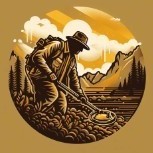

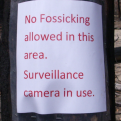


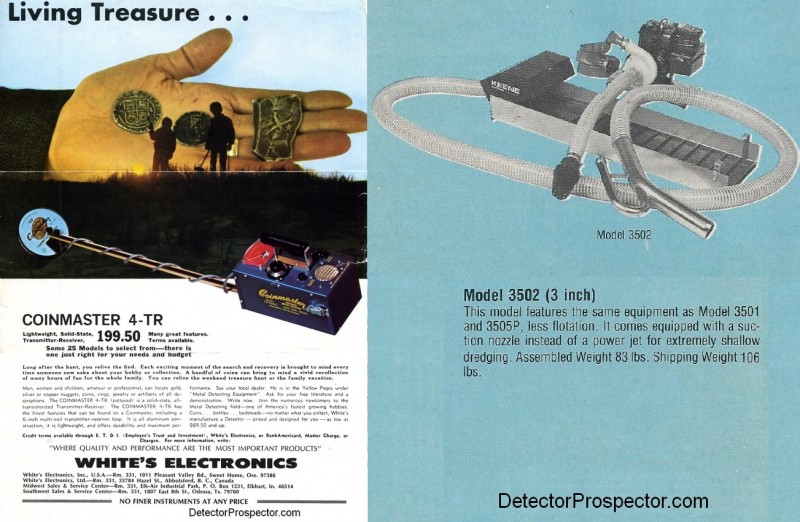
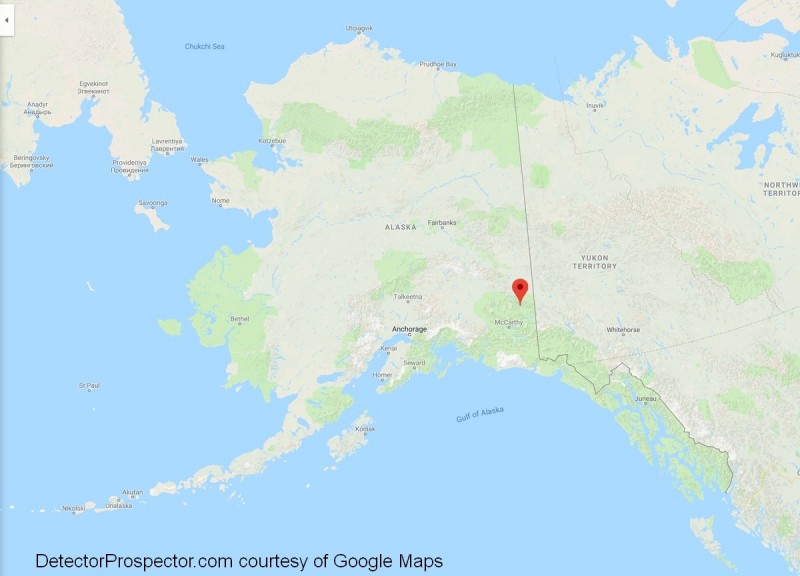

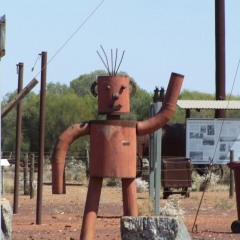
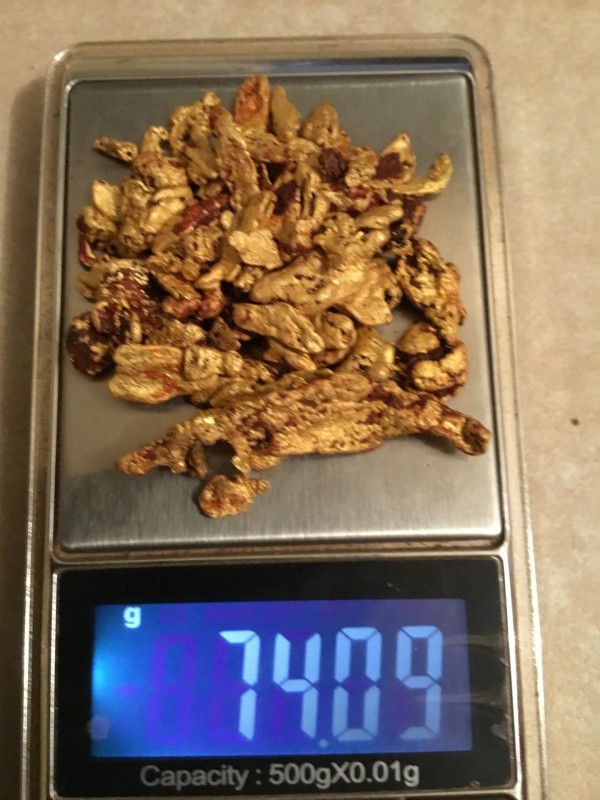
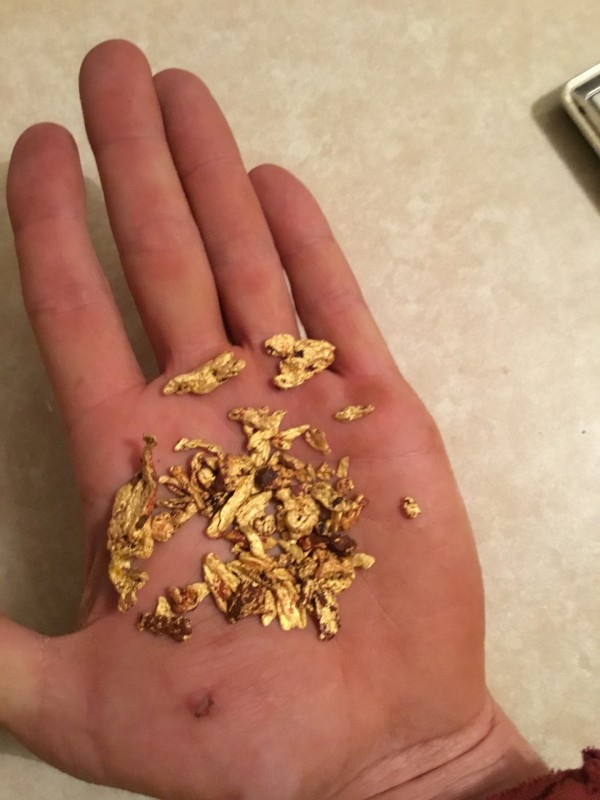
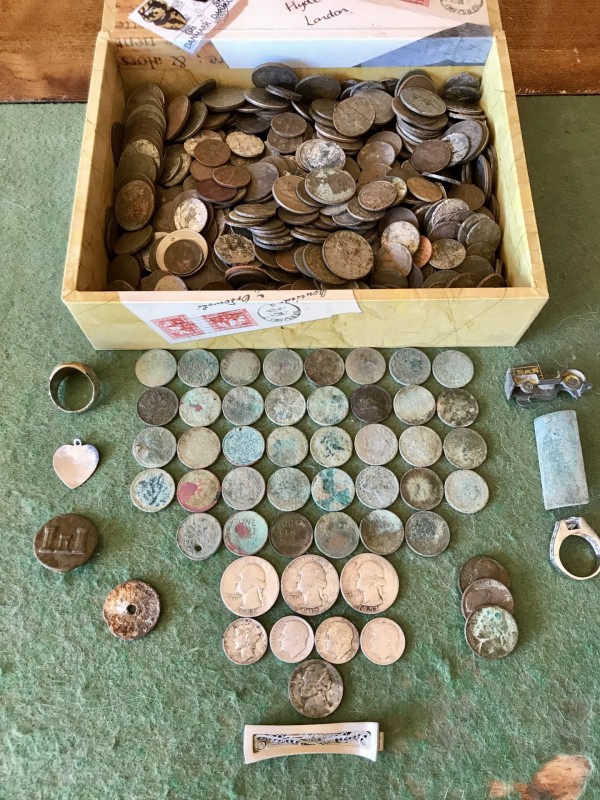
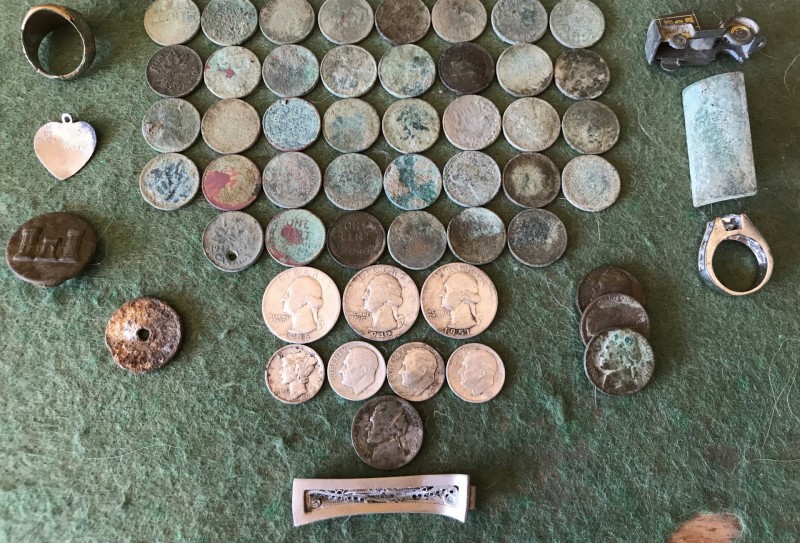
.thumb.jpg.13740cd6abe45f493193ed39c27f67fd.jpg)
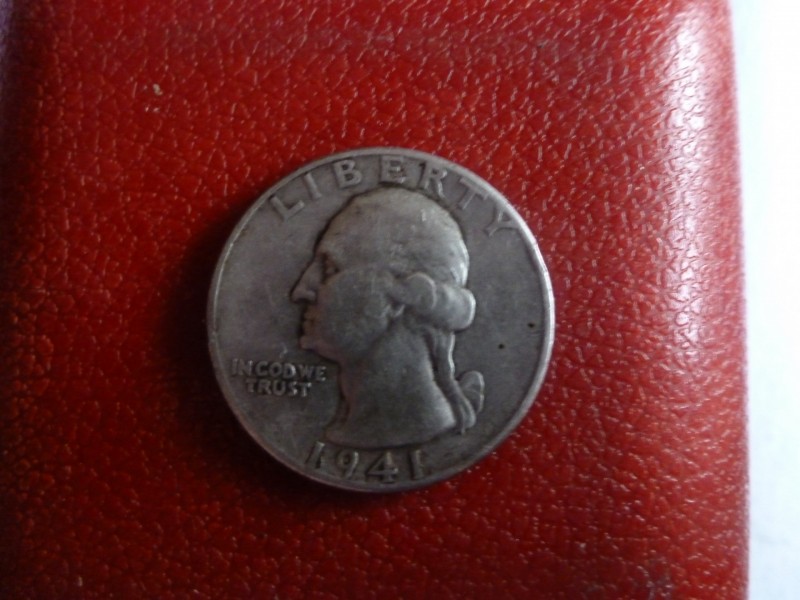


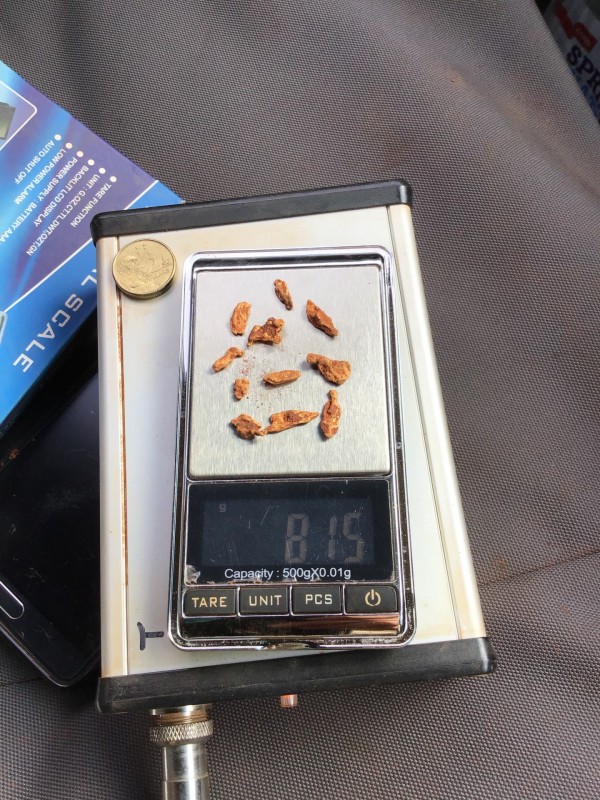
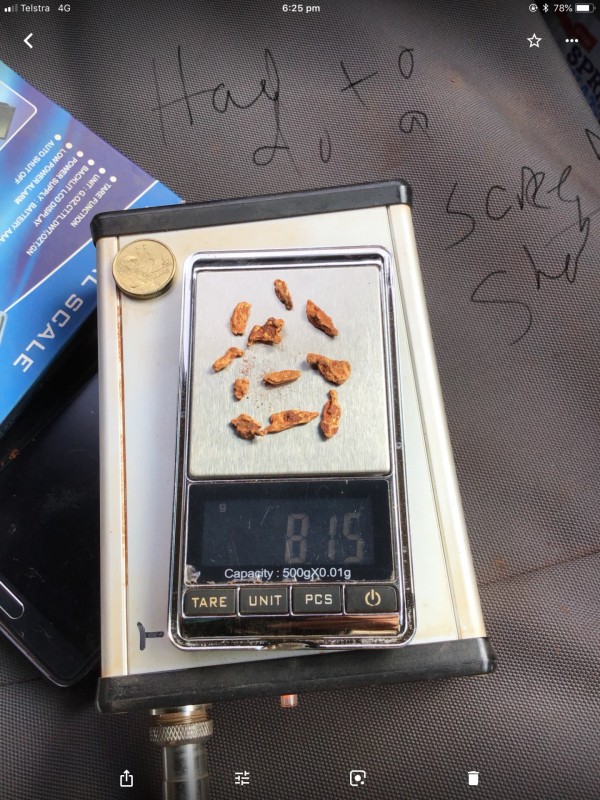
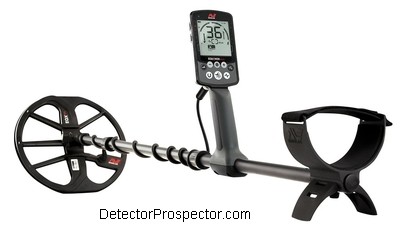
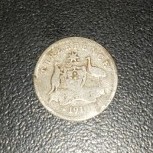
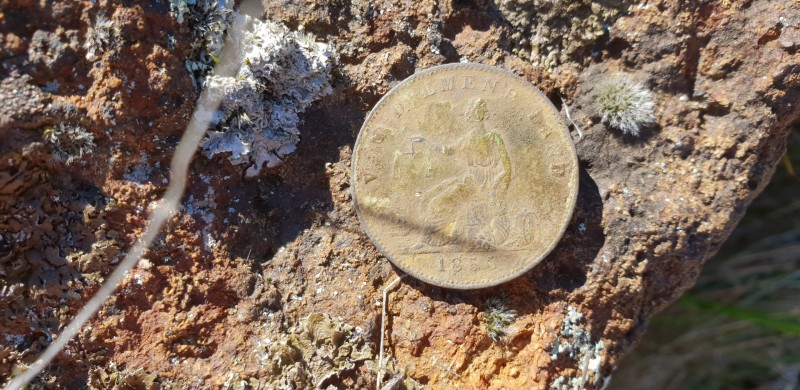
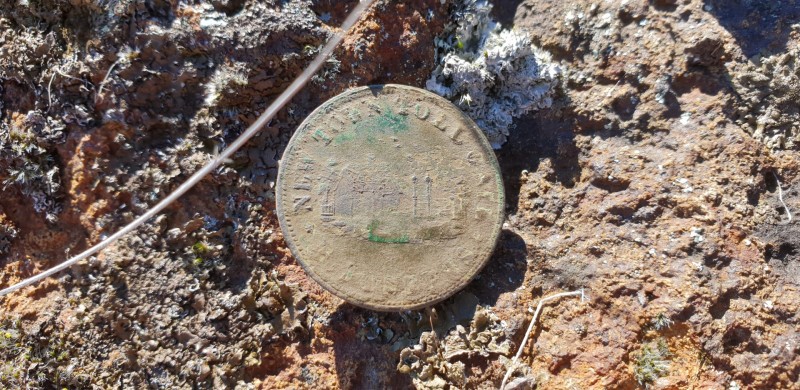
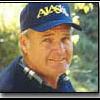
.thumb.jpg.77e4cb5bf39d44bdd2050d2edb7dfdb1.jpg)

